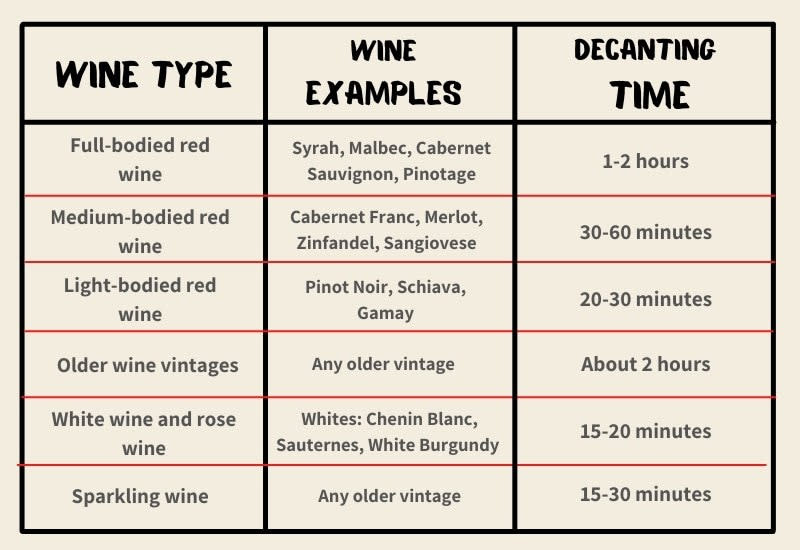
A client asked me a question on decanting the other day, and when trying to formulate my answer it made me realise how many different theories there are, so I have since tried to come up with my own rule of thumb, I hope I can do it some justice here.
The key benefits of decanting are to aerate the wine (encouraging the aromas to come out and softening the tannins) and to remove sediment and this is consistently repeated across Sommeliers and Experts alike. However the timing, shape and size seems to create more discussion.
Aeration
Most experts agree that the bigger/bolder the wine (think Cabernet Sauvignon, Syrah, Pinotage etc) the longer time it should spend in a decanter, which makes sense given they tend to have higher levels of tannin so benefit from longer aeration to soften these, as well as to encourage aroma release. In terms of shape, a wide base and long neck are beneficial here to allow a higher oxygen to wine ratio and also to allow swirling that can help accelerate aeration.
However, ‘vintage alert’ older wines have already had a long term of oxygen exposure, so too much additional oxygen whilst decanting can have a negative impact on quality causing aromas to fade and reducing length. So not only do we need to consider the decanting time and base width/size of the decanter, we also need to consider the neck. Jancis Robinson provides an articulate guide here (through Richard Brendon’s blog https://richardbrendon.com/blogs/journal/decanting-wine?gclid=Cj0KCQiAg_KbBhDLARIsANx7wAyLHaLeO9pfkODNCzCvEeFA41dqjCZADDSiYNIXWQUTJ2Ibmdm-G34aAgNaEALw_wcB. “Older wines benefit from decanters with minimal headspace to avoid being exposed to too much harmful oxygen…”.
Sediment Removal
All very well, though we know that older wines tend to have higher levels of sediment. It is therefore recommended to let the bottle sit upright for a day or two before opening, and then decanting with minimal agitation, so that the sediment can settle and therefore less time sitting in a decanter is required.
So in trying to summarise, and provide a rule of thumb –
- For younger wines, with higher tannins, the more time and aeration the wine needs to express its best and these wines benefit from a wider base and slightly wider decanter neck/mouth.
- Lighter wines still benefit from decanting, just not for as long and the base can be medium or wide.
- For older wines, time in a decanter is still highly beneficial, the length of time can be reduced by allowing sedimentation in bottle first and then using a decanter with a medium base and importantly slimmer decanter neck/mouth to prevent over exposure.
This table from a decanting article on www.vinovest.co/ is useful in terms of time in the decanter, as long as you bear in mind the shape theory from Jancis for older wines:

I hope this was helpful, let me know your experiences of decanting wine and/or using the modern style glassware with a ridged edge… so many options!